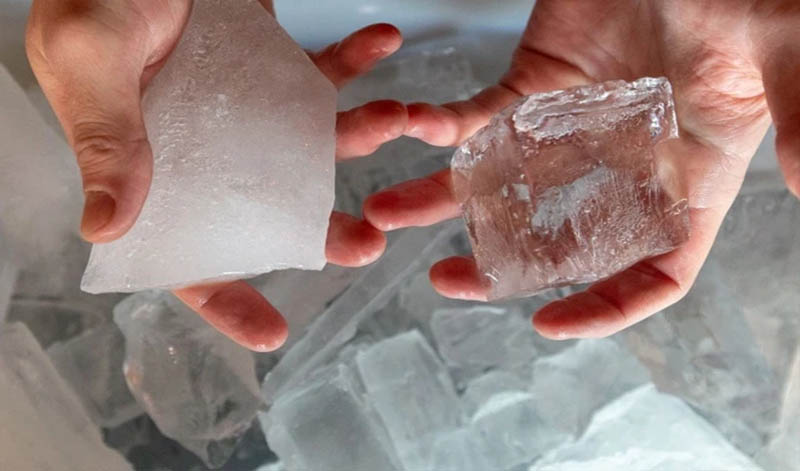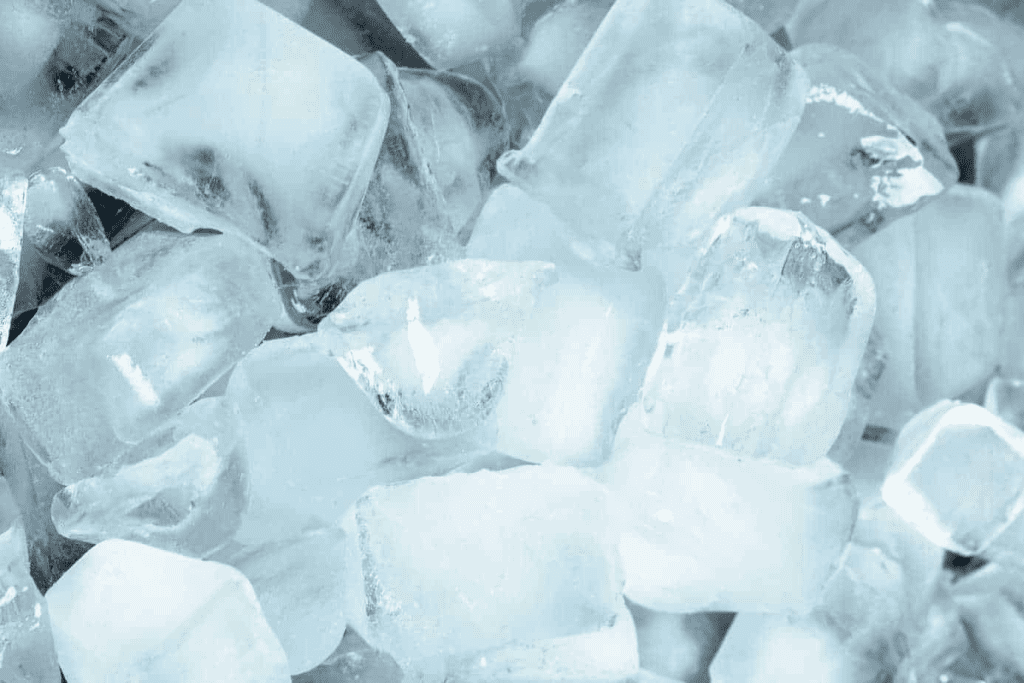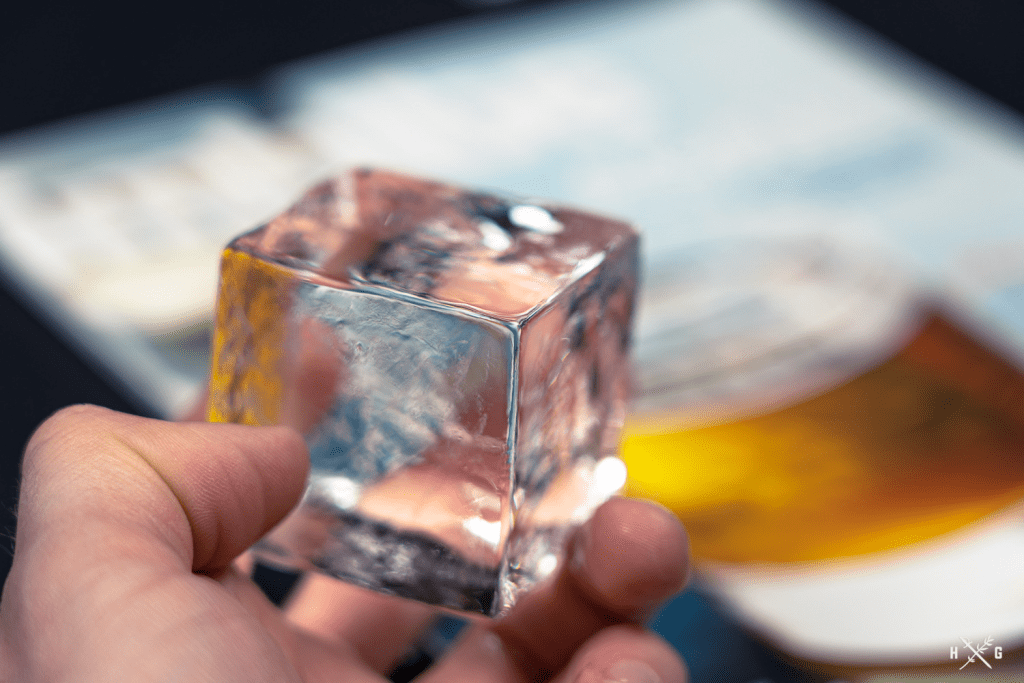Have you ever noticed how some ice cubes look crystal clear, while others appear cloudy and milky? At first glance, it might seem trivial, but this difference in ice clarity actually has some fascinating science behind it. Whether you’re making ice for a cocktail party or simply want a refreshing glass of water, understanding why ice forms the way it does can help you create better, clearer cubes.
Let’s dive into the factors that make some ice cubes crystal clear and others cloudy, along with methods you can use at home to achieve that coveted clear ice.
What Causes Cloudy Ice?

Cloudy ice is often the result of impurities in the water. When you fill your ice tray with regular tap water, you’re not just freezing pure H2O. Tap water contains a mix of minerals, gases, and impurities like lime, calcium, fluoride, nitrates, and even organic materials. Some of these compounds, like calcium and magnesium, are beneficial to your health, while others are just naturally present in most tap water. Although these impurities are invisible in liquid form, they can become apparent once the water freezes.
When water freezes, the process begins from the outside in. As the water solidifies, the impurities get pushed toward the center of the ice cube. This clumping of impurities causes the cloudy, white appearance that you often see in the middle of the ice. Essentially, the core of the ice cube becomes a cluster of trapped impurities, creating a cloudy look.
How Clear Ice Is Formed
On the other hand, clear ice usually forms from either boiled water or bottled mineral water. These methods help to remove or reduce the dissolved gases and impurities that lead to cloudiness. Here’s how each method works:
- Boiled Water: By boiling water, you can remove many of the dissolved gases and certain impurities. When the water cools and is then frozen, the lack of dissolved air allows the ice to freeze more uniformly, reducing cloudiness.
- Purified Water: Bottled or filtered water has fewer impurities than tap water, which means there’s less material that can get trapped and cause cloudiness. This results in a clearer ice cube.
Both methods reduce the number of impurities and gases present, leading to clearer ice compared to using regular tap water.
The Science of Directional Freezing
If you’ve ever seen those beautiful, crystal-clear ice cubes at a fancy bar or in a high-end cocktail, there’s a good chance they were made using a technique called directional freezing. This technique freezes water in a controlled direction, allowing any impurities or gases to escape out of the top or bottom of the water as it freezes.
Imagine filling a cooler with water and then placing it in the freezer. In this case, the ice would freeze from the top down, allowing gases and impurities to settle at the bottom of the cooler. This separation produces clear ice on top while trapping impurities on the bottom. Professional bartenders often use this technique because it creates ice that looks almost like glass, perfect for cocktails that need that extra visual appeal.
While directional freezing might sound complex, it’s possible to try a similar approach at home by using an insulated container or an ice mold specifically designed for this purpose.
Tips for Making Clear Ice at Home

Even without special equipment, you can still make clearer ice at home. Here are some simple methods:
- Boil the Water Twice: Boiling water once helps remove some impurities, but boiling it twice can further eliminate dissolved gases. Let the water cool between boils, and then pour it into your ice tray and freeze. While this doesn’t guarantee perfect clarity, it significantly improves the chances of achieving clear ice.
- Use Distilled or Filtered Water: Distilled water has fewer minerals and impurities, which contributes to clearer ice. If you don’t have distilled water, filtered water from a high-quality water filter can also improve ice clarity.
- Freeze Slowly: Rapid freezing traps more air and impurities, leading to cloudy ice. Freezing the water slowly, using a cooler or an insulated container, allows impurities to escape, making the ice clearer. Place the container in your freezer, leaving the top open so that air and gases can escape as the water freezes.
- Try a Clear Ice Mold: If you’re serious about making clear ice, invest in a directional freezing mold. These molds insulate the sides and bottom, allowing the ice to freeze from the top down. They’re easy to find online and produce consistently clear ice cubes.
Does Clear Ice Really Matter?

Why should anyone care about clear versus cloudy ice? Beyond aesthetics, clear ice has some functional advantages. For one, it melts more slowly than cloudy ice. This slower melting rate is particularly beneficial for those who enjoy cocktails or whiskey on the rocks, as it keeps the drink cold without diluting it as quickly.
Moreover, clear ice tends to taste better. The absence of trapped impurities means you’re less likely to taste minerals or other compounds in your drink, allowing the true flavors to come through. This is why upscale bars and restaurants take extra steps to serve drinks with clear ice – it not only looks elegant but also enhances the overall drinking experience.
Conclusion: Transform Your Ice-Making Game
Who would have thought that something as simple as an ice cube could hold so much science? The next time you reach for an ice cube, take a moment to notice whether it’s clear or cloudy. That little detail can tell you a lot about the water and the freezing process used. By understanding what causes cloudy ice and trying some of the methods above, you can create beautifully clear ice cubes that not only look great but elevate your drinking experience.
Whether it’s for a classy cocktail or a refreshing soda, taking a few extra steps to make clear ice is a small change that can make a big difference. And remember, the clearer your ice, the purer your drink!


